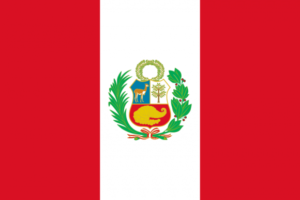FCPAméricas Blog
Peru Introduces Corporate Liability for Corruption Offenses with a Compliance Program Defense
4.02.2018
 This article was originally published in Miller & Chevalier’s FCPA Winter Review 2018.
This article was originally published in Miller & Chevalier’s FCPA Winter Review 2018.
On January 1, 2018, Peruvian Law 30424 went into effect, introducing corporate liability for existing criminal offenses related to corruption, money laundering, and terrorist financing. The law was originally scheduled to take effect in July 2017, but Legislative Decree 1352, adopted on January 6, 2017, amended the original version of Law 30424, broadening the range of applicable offenses and shifting the effective date of the entire law to January 1, 2018.
Offenses. Under the new law, legal entities may be liable for domestic and international bribery of public servants or officials, expressly including officials in judicial positions (as the corresponding provisions are defined in the Criminal Code), as well as for certain offenses related to money laundering and terrorist financing defined in other legislation. In addition to direct liability, legal entities may be liable for conduct carried out in the legal entity’s name, on its behalf, or for its benefit by any of the following:
- Partners, directors, de facto or legal administrators, legal representatives, or attorneys-in-fact of the legal entity or any of its branches or subsidiaries;
- Any person who was under the authority and control of a person or entity in paragraph (a) and committed the offense by their order or authorization; or
- Any person within the scope of paragraph (b), where the commission of the offense was possible because the person or entity in paragraph (a) did not fulfill his or her duties of supervision, oversight, and control with respect to the conduct at issue.
Exemption. A legal entity is exempt from corporate liability only if an individual who commits the offense does so exclusively for his or her own benefit or the benefit of a third party that is distinct from the legal entity.
Penalties. Violations of the law can result in two types of penalties. The first is a fine, the amount of which is derived from either the undue benefit or the legal entity’s annual income. The second is a corporate “disqualification,” which can take one of several enumerated forms, from suspension of an entity’s social activities to debarment, nullification of various administrative or municipal licenses, or dissolution.
The law lists several mitigating circumstances that can reduce potential penalties, including cooperation with authorities, impeding the harm caused by the offense, full or partial reparation of the damages, and the adoption and implementation of a “prevention model” (akin to a compliance program) after the commission of an offense but before trial. The law grants courts substantial discretion with regard to the imposition of penalties, including the ability to suspend a penalty by requiring a legal entity to: (1) provide full compensation for the damage caused by the offense; and (2) adopt and implement a prevention model. If the legal entity does not become subject to another criminal proceeding within the suspension period, the court may nullify the imposed sanction and dismiss the case upon confirming that the legal entity satisfied the compensation and prevention model requirements.
Compliance Programs. To be considered sufficient under the law, a prevention model must be tailored to a legal entity’s nature, risks, needs, and characteristics, and must contain adequate monitoring and control measures to prevent the offenses covered by this law or significantly reduce the risk of their commission. It must also include, at a minimum, the following elements (with an exception for small enterprises):
- A person (or body) in charge of prevention, appointed by the highest administrative body of the legal entity and able to exercise this function autonomously;
- Identification, evaluation, and mitigation of risks related to the offenses covered by this law;
- Reporting procedures;
- Dissemination and periodic training; and
- Continuous evaluation and monitoring of the prevention model.
The law states that if an adequate prevention model is in place, corporate liability will not attach if an individual commits a proscribed offense by fraudulently eluding a duly implemented prevention model.
In all, the new law reflects a number of standards called for by the OECD Anti-Bribery Convention. Peru has not yet acceded to the Convention but has agreed to adhere to the Convention’s standards under an OECD Country Programme, and the new law appears designed to address certain gaps in the country’s legal framework for reducing domestic and international corruption. With corruption allegations recently reaching the highest levels of Peru’s government, the new law comes into force at an opportune time for the country’s enforcement authorities to put it into practice.
The opinions expressed in this post are those of the author in his or her individual capacity, and do not necessarily represent the views of anyone else, including the entities with which the author is affiliated, the author`s employers, other contributors, FCPAméricas, or its advertisers. The information in the FCPAméricas blog is intended for public discussion and educational purposes only. It is not intended to provide legal advice to its readers and does not create an attorney-client relationship. It does not seek to describe or convey the quality of legal services. FCPAméricas encourages readers to seek qualified legal counsel regarding anti-corruption laws or any other legal issue. FCPAméricas gives permission to link, post, distribute, or reference this article for any lawful purpose, provided attribution is made to the author and to FCPAméricas LLC.
© 2018 FCPAméricas, LLC
Post authored by Matteson Ellis, FCPAméricas Founder & Editor



 Comments
Comments